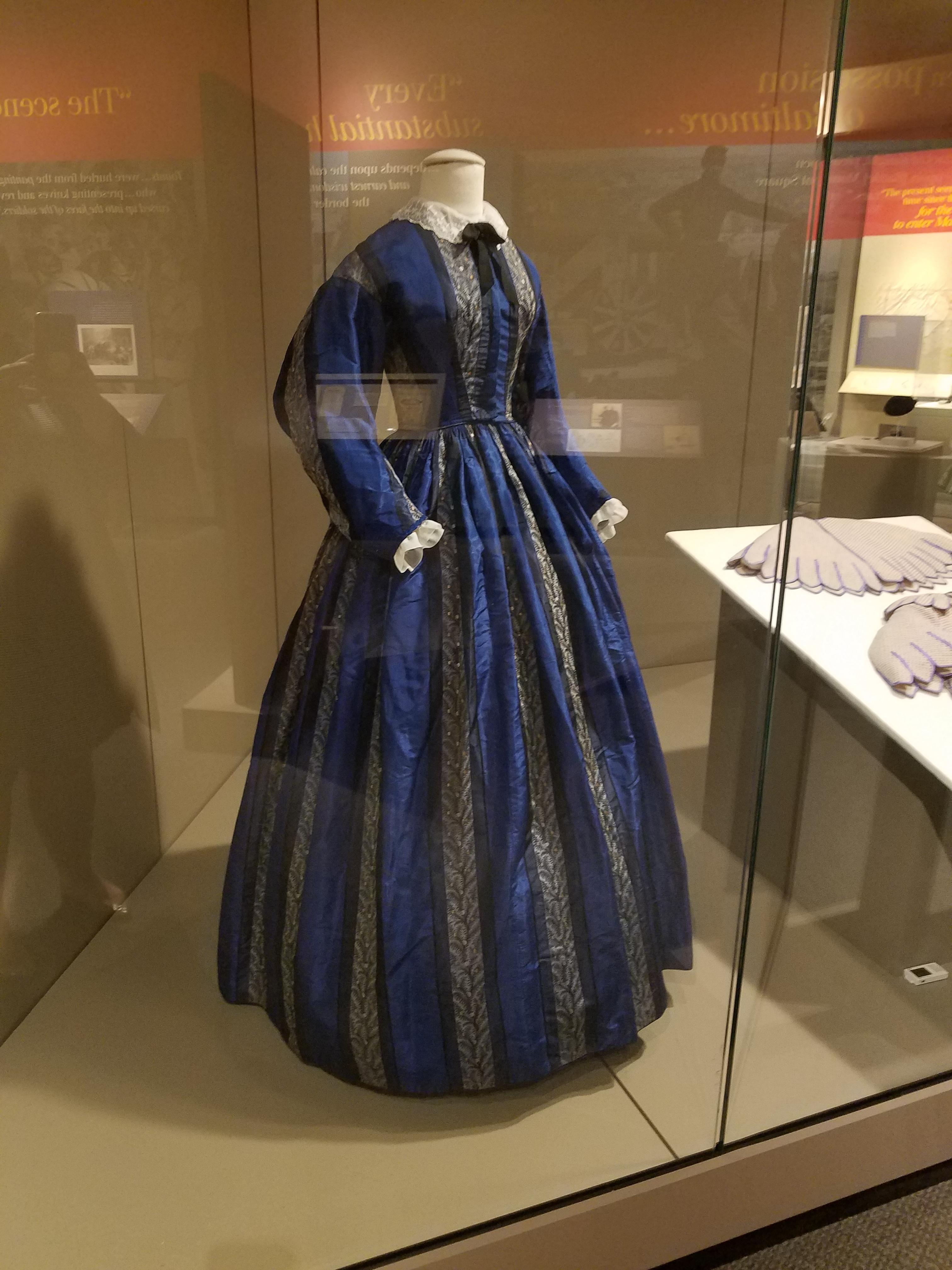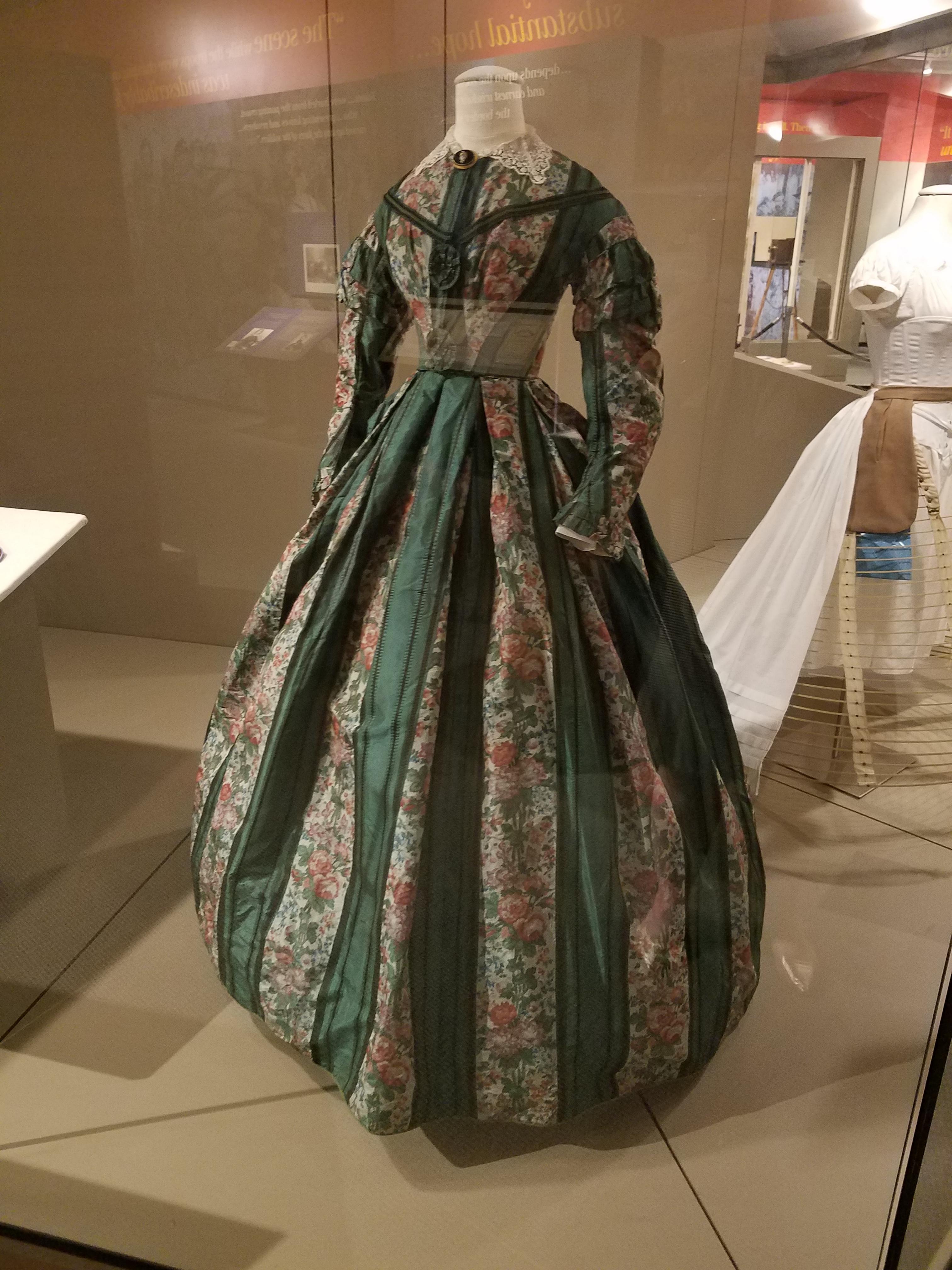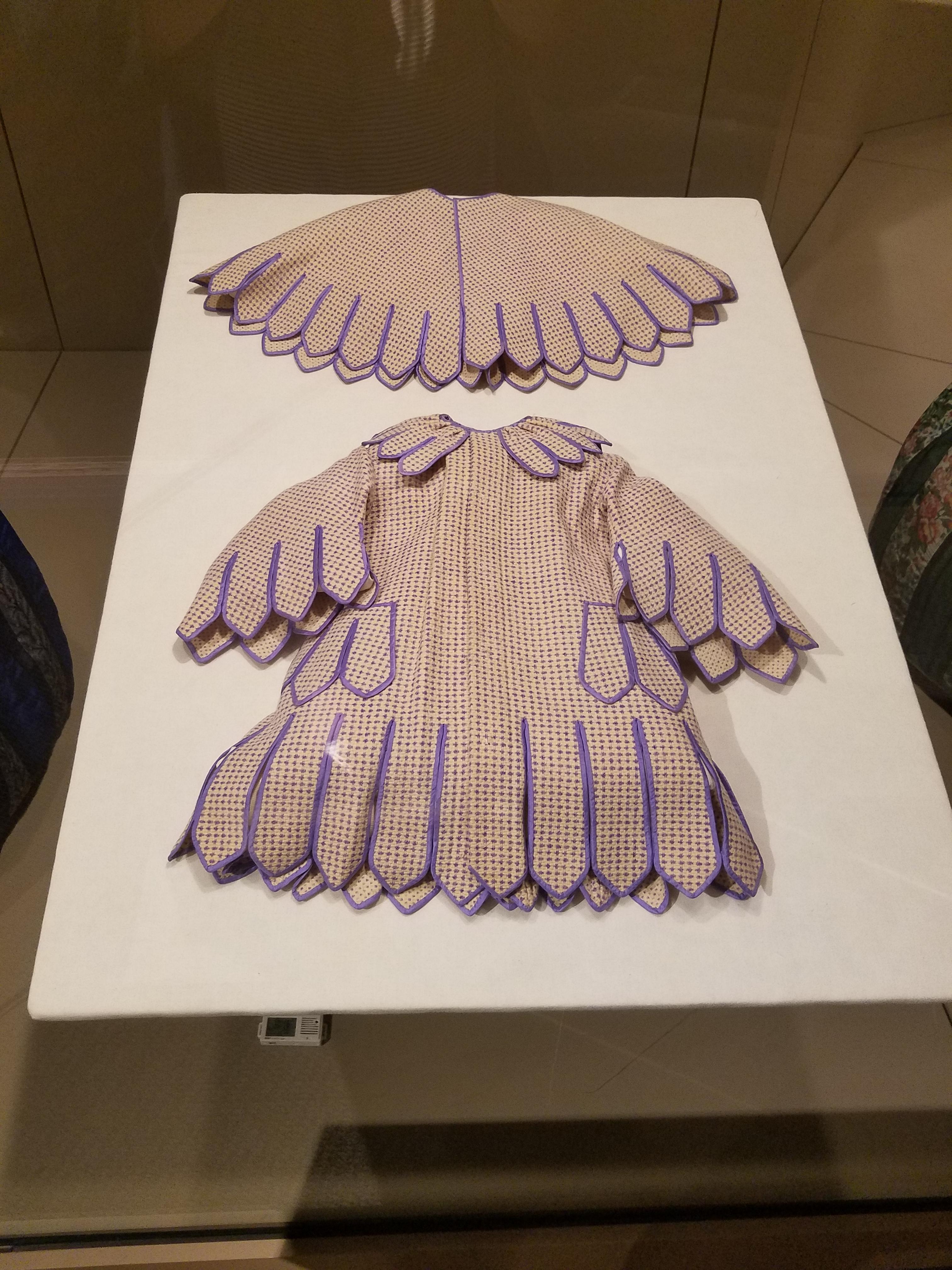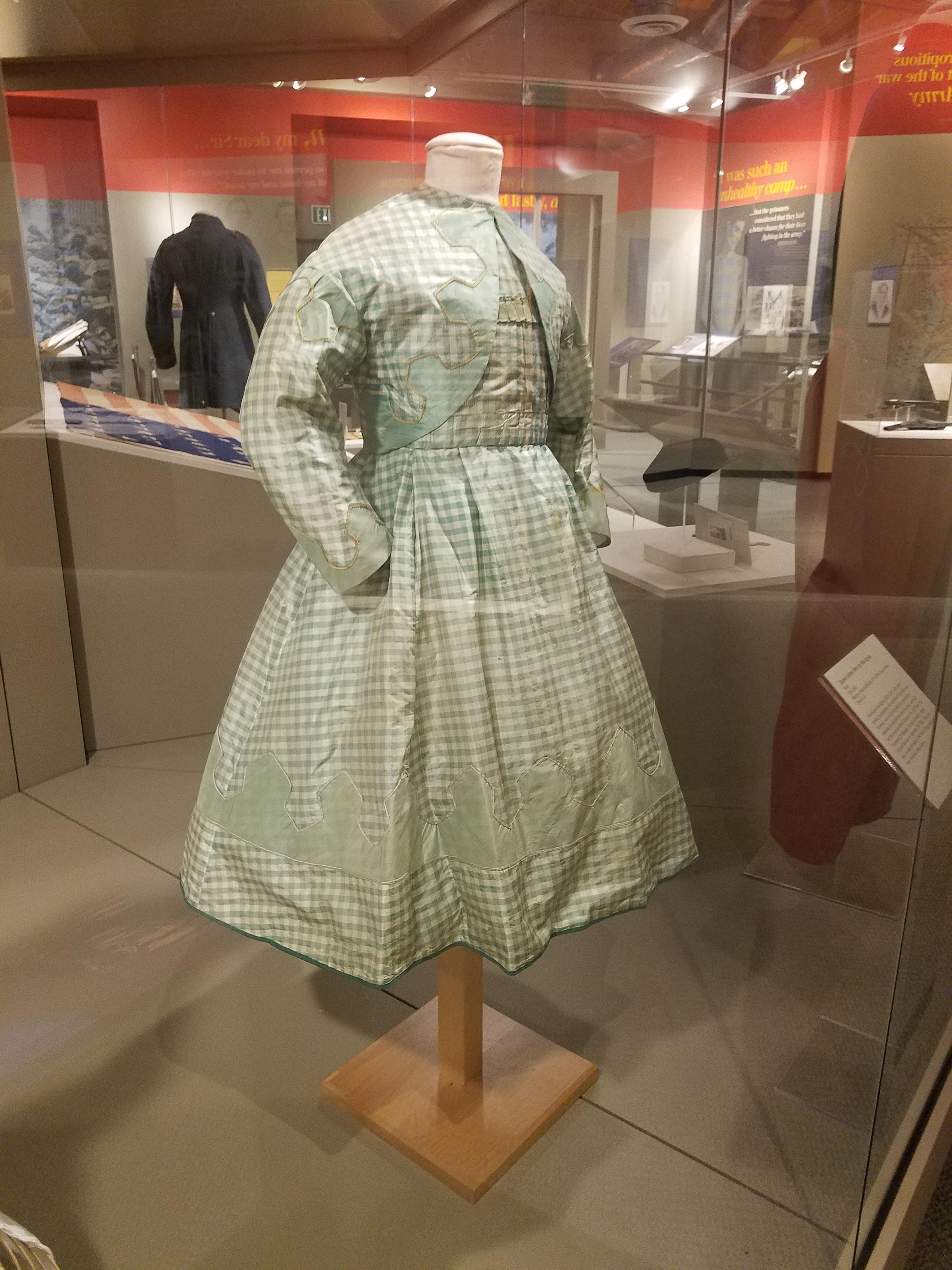Why Do We Have Such Colorful Civil War Dresses?
By: Nora Ellen Carleson, Fashion Archives Summer Intern, 2018
When we think about wartime fashions, often we think of fabric rations, women in coveralls, uniforms, and drab beige, khaki, or olive clothing. While these textiles and styles were common during World War I and World War II, we often forget that during the Civil War bright patterned wool and silk garments were still in fashion and therefore regularly worn.

This past summer at the Maryland Historical Society we put six new garments on display in Divided Voices: Maryland in the Civil War. While two of the dresses are examples of women’s mourning styles of the period, two women’s day dresses, a girl’s day dress and jacket, and a young boy’s riding coat and cape, all display the vivid colors worn during the mid-nineteenth century—even during the war.

Women’s Green Day Dress. circa 1862, silk, Maryland Historical Society,Gift of Mrs. Lawrence R. Carton, 1956.75.10.
There are many reasons that these bright fashions were worn during the war. First, the rich colors displayed by these dresses were only possible because of the relatively new invention known as aniline dyes—the first synthetic dye stuff. Originally created by William Henry Perkin in 1856, aniline dye was initially a purplish mauve colored dye made from coal tar.[1] However, incredibly quickly, more synthetic dyes were produced to create brilliant and intense colors for fabrics, paint, and wall paper among other items. These colors and dyes became extraordinarily popular.
Prior to the invention of synthetic dyes, fabrics were colored with pigments from plants and minerals. The quest to achieve glowing green colors in fabric and paint and how the color, was originally achieved through the use of arsenic, which actually caused the death of both makers and wearers of garments alike.[2] The creation of aniline dyes with less harmful chemicals meant colors such as bright orange, fuchsia, yellow, and many shades of purple, blue, green, and red previously not invented were available in textiles. Once aniline dyes came into use they never left.

Boy’s Carriage Coat and Cape, Circa 1863, wool, Maryland Historical Society,Gift of Mr. Richard L. Steiner, 1967.85.5a,b.
Pieces like this little boy’s carriage coat and cape, made of cream wool with bright lilac colored piping and lines, is a perfect example of a garment made for a child during the Civil War that used novel synthetic dyes.
Another reason that bright colored clothing continued to be worn is that many of the garments sported during the war years, and even for quite a few years after, were re-fashioned from earlier pieces of clothing. Of the pieces going on display in this exhibit rotation that were dyed with synthetic dyes, three dresses (the girl’s dress and the ladies’ green and blue day dresses) show signs of alterations. While it was originally thought that the war would end quickly, eventually it was clear that it would continue for quite some time. With less access to textiles and fastenings, as well as money, it was easier to wear bright colored clothing from a few years earlier and adjust it to fit more contemporary styles or changing bodies.

While one can see on the many garments going on display that many of the dyes held fast and are just a bright as they were when first created, others, such as the girl’s dress, show less stable early pigments. Some of the synthetic dyes proved unstable over time and migrated, faded, or even changed color. This dress once featured a far more striking blue-green color. Over time, the dress has lost much of the blue color, while the yellow color still remains, causing us now to see a mint green color with the the cream.
To see the stunning silks for yourself and the rest of the re-configured installation, including a woman’s mourning dress never before on display, visit the Divided Voices: Maryland in the Civil War exhibition, recently redesigned and reopened in summer 2018.
New Call-to-action
Resources:
[1] “William Henry Perkin,” Science History Institute, June 1, 2016, https://www.sciencehistory.org/historical-profile/william-henry-perkin. Accessed June 16, 2018.
[2] Alison Matthews David, Fashion Victims: The Dangers of Dress Past and Present (London, England: Bloomsbury, 2017).

